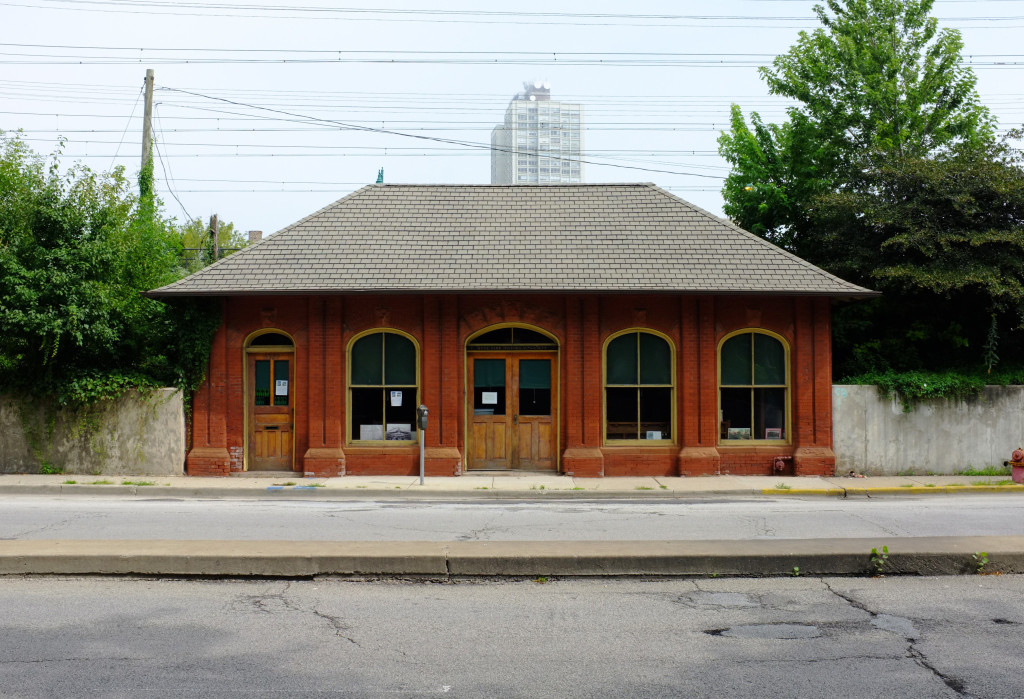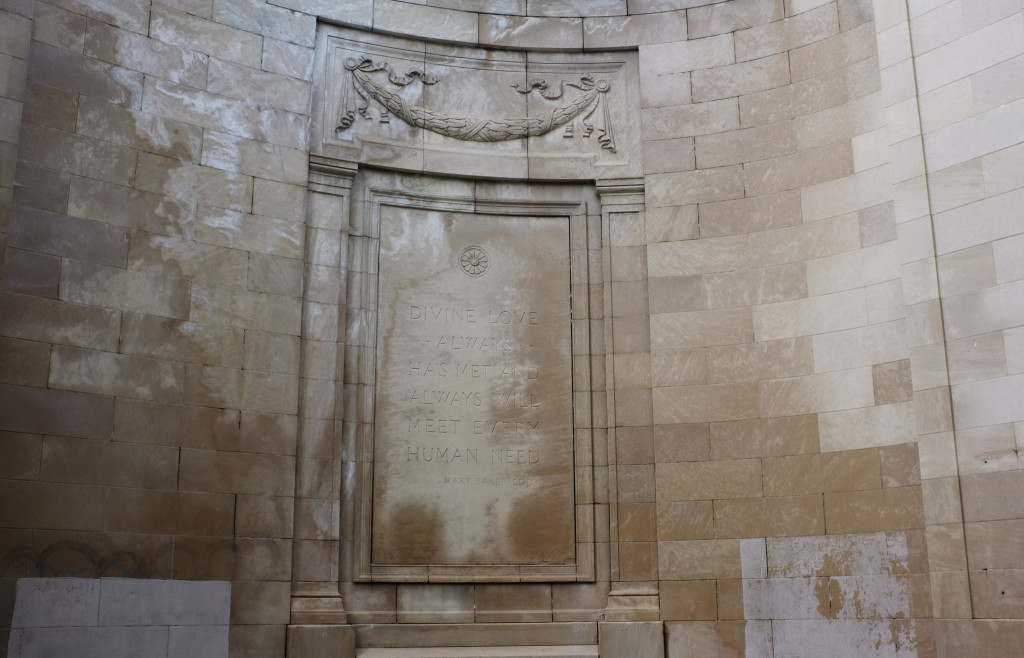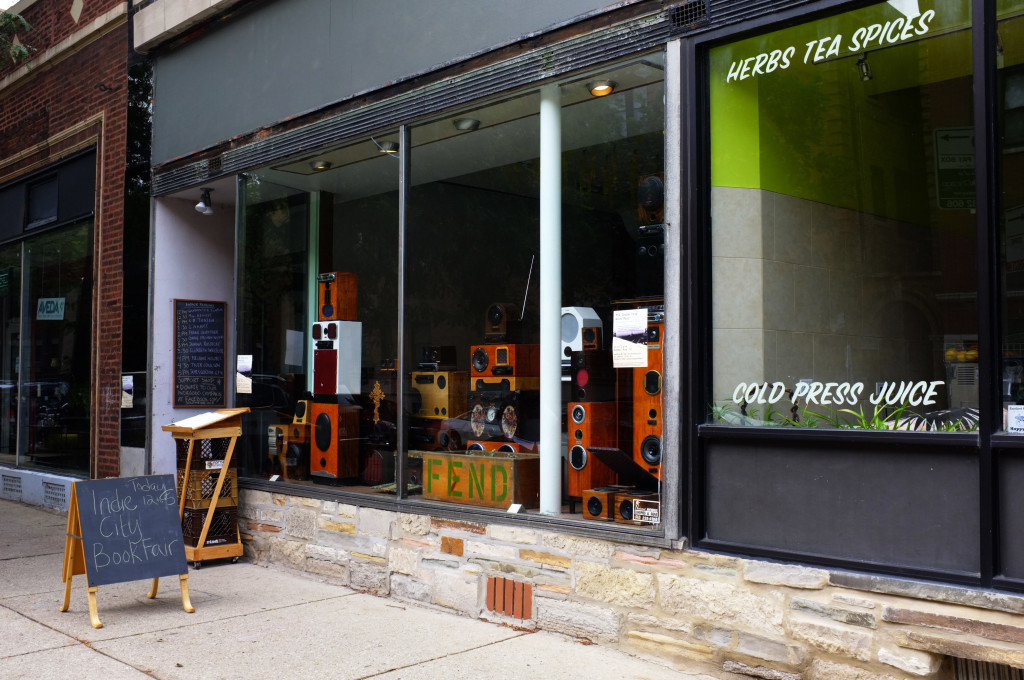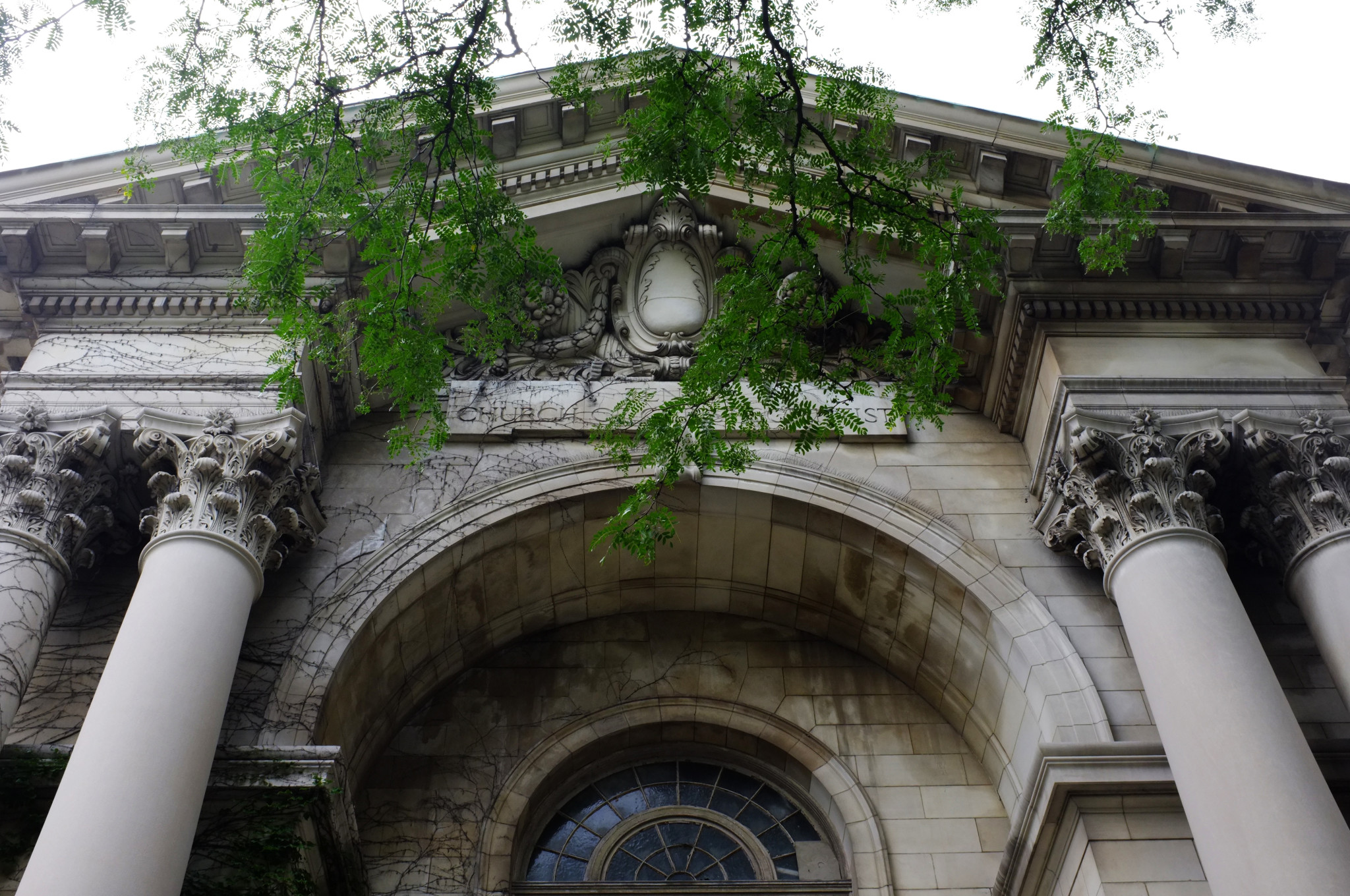Start with the University. You must, because its gravitational force–money, prestige, vision–is what constitutes Hyde-Park-as-such in the first place, gives it its distinctive topography and limits. Without the UofC, Hyde Park would long ago have dissolved into the surrounding South Side. And yet the University’s directive force only sculpts the neighborhood-scape to a certain extent. Into its crevices and blind spots, the South Side languidly but ineluctably flows, filling in available space, moving over when diverted, then back again.
I grew up here in the seventies and eighties, left in the nineties, then came back near the end of the last century. In the first years of my return, the block of 53rd Street between Kenwood and Dorchester captured my imagination. On the corner was Ribs ‘N’ Bibs, the scent of burnt hickory wood and barbecue sauce rising from its metal chimneys. A few doors down, Scholars’ Books offered computer manuals and Chinese literature, along with tapes of Mao-era operas and a shelf of left-wing books in English. Next door to that, Second Hand Tunes featured record bins full of seventies soul and eighties New Wave. They’re all gone now, (though Hyde Park Records continues the location and mission of Second Hand Tunes), but their spiky idiosyncrasy, their casual jumbling up among one another in a milieu of open sky and looseness of space remain a hallmark of Hyde Park as it can still be found.
The commercialism and trendiness that have marred numerous once-interesting parts of the North Side are perpetually chewing away at the edges of all this, more seriously than ever these days. But the sheer presence of the South Side has always hitherto protected the UofC from itself–that is, from fully unleashing economic forces that would destroy Hyde Park’s unique sense of aloofness, of contemplation, of peculiar private pursuits. May it continue to do so.
Mike O’Flaherty is a graduate of the UofC Lab School, a writer, a novelist, and a veteran DJ at WHPK.
Best Out-of-the-Way Historical Relic
We first encountered the Hyde Park Historical Society while wandering around the back end of the ComEd substation on 56th and Harper. It’s easy to miss the small structure nestled behind the Metra tracks across the street from Maravillas. The old railway station’s shingled roof slopes down toward arched windows surrounded by red-brick walls, giving way to a vintage wooden interior, where antique bookshelves, clocks, and various Hyde Park trinkets like street signs and portraits line the walls. The society’s modest exterior gives only a hint of its rich past or the vast trove of historical knowledge inside, offering exhibit viewings for only two hours every Saturday and Sunday.

Initially constructed in 1893 or 1894 (the exact year is unknown) by the Chicago City Street Railway, it was a waiting room/rest area on the cable car line that once ferried Hyde Parkers downtown and served as a major mode of transportation during the World’s Columbian Exposition in Jackson Park. After the cable car and subsequent trolley systems were abandoned by the early 1900s, the building was repurposed several times over the following decades, serving as a short-order restaurant, a Greek diner, and a storage shed for newspaper delivery carts. By the mid-seventies, however, the building was in disuse, and probably would have been abandoned or torn down had it not been for several organizers who claimed the building in 1975. The Hyde Park Historical Society was thus officially chartered in 1977, and its chairman brought in architect John Vinci to help reconstruct the interior of the building and restore it to its original railway car station look. Because no records of the initial design remained, Vinci had to rely on other Chicago area railroad stations from the period as well as details of the building’s renovations to recreate the railway building.
Today, the Historical Society acts as more than a museum and has extensive archives from Hyde Park dating to the Nineteenth century, all of which are housed in the Special Collection Research Center at the UofC’s Regenstein Library. These collections run the gamut from building records to personal correspondences and audio recordings, and offer visitors a look into Hyde Park’s surprisingly eventful past. The wealth of information in these archives truly is astounding: nearly every important event in Hyde Park’s history is represented, including records like the one that lists every Hyde Park resident who joined the Abraham Lincoln Brigade, a three-thousand-soldier American army unit that fought in the Spanish Civil War.
Unlike the formidable library in which these files are stored, the Hyde Park Historical Society maintains a humble attitude despite its important role in the neighborhood. Plenty of locals frequent Maravillas across the street yet never notice the red railway station sitting nearby, which has since been replaced in its original function by the Metra just overhead. While isolated from the rest of Hyde Park, the Historical Society has played a vital role in preserving the neighborhood’s heritage over the years, and will no doubt continue to do so, documenting life from a vantage point on the outskirts.
Hyde Park Historical Society, 5529 S. Lake Park Ave. Saturday and Sunday, 2-4 pm. (773) 493-1893, hydeparkhistory.org (Juliet Eldred and Michal Kranz)
Best Public Library Architecture
Blackstone Library
Six or seven blocks north from St. Stephen’s Church on Blackstone lies the Blackstone Library, the second neoclassical rotunda on this list of “bests.” Designed by Solon S. Beman, an architect famous for his Christian Science church designs that probably inspired the design of St. Stephen’s, the Blackstone Library has stood on Lake Park and 49th since 1904, when it became the first dedicated library in the Chicago Public Library system. While the grand staircase and Doric columns that adorn the entrance make a powerful first impression, by no means does the interior disappoint, with marble columns, gold-laced banisters, bronze doors, mosaic floor tiles, beautiful murals, and stained glass windows along the dome of the rotunda. A bronze relief of the library’s namesake, Timothy B. Blackstone, hangs above a row of bookshelves. All of this decoration makes the inside of the library feel like a temple of sorts, its every crevice cramped with books and various knickknacks. Although reportedly its selection of actual books is limited and its study rooms do not stay quiet enough for some, the Blackstone Library remains one of the most unique buildings in the Hyde Park–Kenwood area, and the design alone remains reason enough to visit.
Chicago Public Library–Blackstone Branch, 4904 S. Lake Park Ave. Monday and Wednesday, noon-8pm; Tuesday and Thursday, 10am-6pm; Friday and Saturday, 9am-5pm. (312) 747-0511. chipublib.org (Michal Kranz)
Best Any Time of The Week Treat
The Promontory
Follow the Longman & Eagle team south from Dusek’s Board & Beer, Punch House, and Thalia Hall to their newest venture in Hyde Park. Like their Pilsen outposts, the Promontory is a multipurpose, multisensory, yet cohesively beautiful space. Come for brunch on Saturday, salsa dancing on Wednesday, yoga and mimosas (“YoMosas”) on Sunday, and dinner and a concert on almost every day of the week. Or just treat yourself and a couple friends to a drink any night of the week that calls for something a little special––drinks range from a two dollar can of High Life to an artful menu of ten dollar cocktails. The food concept is built around the hearth featured in the kitchen and on the patio, and the warmth extends upstairs to the music venue and second bar that hosts the soulful and jazzy sounds of the South Side. Come to savor, spectate, and maybe to spot a local celebrity.
The Promontory, 5311 S. Lake Park Ave. Dinner Sunday–Thursday, 5pm–11pm; Friday–Saturday, 5pm–1am; weekend brunch 9am–3pm; weekday lunch 11am-3pm. Average entrée $14–$20. (312) 801-2100. promontorychicago.com (Hannah Shea)
Best Local Ruins
St. Stephen’s Church
Described as a “fat toad” by a neighborhood writer, the imposing yet derelict St. Stephen’s Church stands out among residential buildings on the quiet 5600 block of S. Blackstone Ave. Built in the 1910s during a period of rapid growth for Chicago’s Christian Science community, St. Stephen’s (then called the Tenth Church of Christ, Scientist) was constructed by Coolidge and Hodgdon, the firm that designed Bond Chapel and Ida Noyes on the UofC campus. When many Christian Science Churches in the city shut their doors in the sixties, this church was

acquired by a small, predominantly black congregation and renamed St. Stephen’s. The local parish remained there until the late nineties, when developer Konstantinos Antoniou bought the property. Antoniou hoped to build a condominium behind the original neoclassical façade of the church, but a prolonged battle ensued between him and nearby residents concerning height, historic preservation, and parking. Foreclosure proceedings followed in 2007, and Sergio & Banks briefly put the property on the market for $1.5 million in 2011. St. Stephen’s now rests in the hands of Heartland Bank & Trust, but the fate of the church is unclear. For now, with its crumbling stone, broken glass, and graffiti, it remains a local haunt for photographers of urban decay.
St. Stephen’s Church, 5640 S. Blackstone Ave. (Chloe Hadavas)
Best Non-Harold’s Chicken
Uncle Joe’s Jerk Chicken
This criminally under-appreciated restaurant across the street from Kenwood Academy (and conveniently located off the 2, 6, and 15 bus stops to make for easy after-commute access) serves up the sauce-soaked chicken meals common to South Side jerk restaurants, including the excessive side orders (mac and cheese, beans and rice, plantains, and better-than-Harold’s bread). It also maintains a delightful reggae playlist and, even more delightfully, has a lot of seating. The half-jerk is probably the best value, but the higher price and longer wait for the barbecue jerk are worth it. With either order the sauce is the same: rich but not too spicy, and so popular that the management has started selling it by the bottle.
Uncle Joe’s Jerk Chicken, 1461 E. Hyde Park Blvd. Monday-Saturday, 11am–10pm; Sunday, 11am–7pm. $4-$17 (773) 241-5550 (Jake Bittle)
Best Kid-Friendly Art Center
Little Black Pearl Art & Design Center
Little Black Pearl Art & Design Center plays a pivotal role in developing and nurturing the artistic talents of local youth. The community center’s whitewashed, 47th Street façade stands in stark contrast to the imposing, modern glass panes on its Greenwood Avenue entrance; this contrast testifies to both the center’s humble beginnings and its more recent success. Little Black Pearl was founded in 1994 by Monica Haslip after she purchased an unkempt space in North Kenwood. When the workshop first opened, classes and workshops were held in the building’s basement. Twenty-one years and $10 million later, Haslip has moved Little Black Pearl to its current location, where it boasts a twenty-eight-person staff, 40,000 square feet, and cutting-edge technology for the workshop’s students. Not only does the community workshop format allow students to express themselves through visual art, but also offers courses in furniture building, the business of art, and lectures with prominent artists, musicians, and activists like Angela Davis. Perhaps most importantly however, LBP empowers young people in the community by allowing them to present themselves and their art as professional at the center’s “gallery peeks,” which have attracted patrons from across Chicago. Kenwood residents with kids: don’t pass this place up.
Little Black Pearl Workshop, 1060 E. 47th Street. 10am–6pm Monday-Friday, 10am-6pm. (773) 285-1211. blackpearl.org (Michal Kranz)
Best Re-use of an Antiquarian Bookstore
South Side Hub of Production

The former site of O’Gara & Wilson Antiquarian Bookstore is now home to SHoP, an independent cultural center and experimental studio. Since 2011 SHoP has, in many different forms, provided Hyde Park and its surrounding South Side neighborhoods with a unique perspective and an experience of the arts grounded on the motto, “Minimal Bureaucracy: Maximal Diversity.” Early in the summer, SHoP hosted a series of community and artist-led events and exhibits such as The Barack Obama Presidential Library, the Indie City Book Fair, and the 24-Hour One Act Festival. Ongoing programs have included writing, bookbinding workshops, open mics, film screenings, concerts, performances, and upcoming programs will include weekday afterschool camps for children as well as weekend arts events.
SHoP is currently running an Indiegogo campaign to raise funds due to the sudden withdraw of financial support from its former benefactor. Whenever the doors are open, visitors and passersby are welcome to come inside and share their ideas for programming and participate in events.
Southside Hub of Production (SHoP), 1448 E. 57th Street. Open Saturday 1pm–5pm and during schedules events. Free writers’ workshop Tuesdays, 7pm–9pm. Contact Laura Shaeffer for appointments. southsidehub.wordpress.com. To donate, visit
www.indiegogo.com/projects/support-shop-an-experimental-project-space#/story.
(Candice Ralph, Volunteer and Artist with SHoP)

